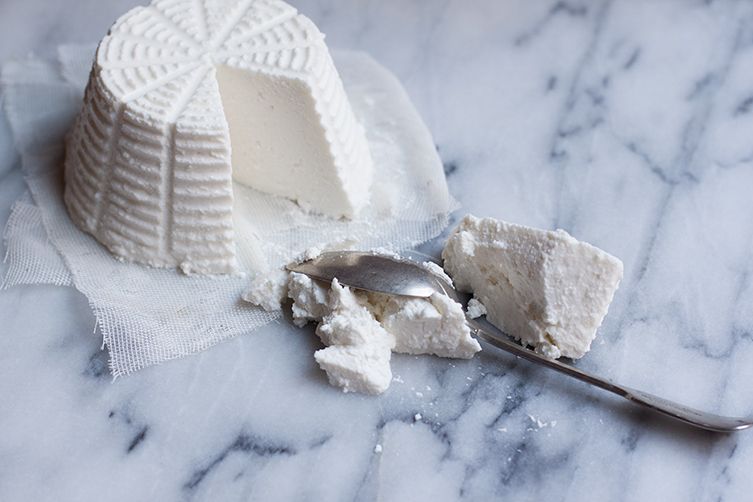Popular on Food52
25 Comments
unofornaio
December 6, 2018
Emiko,
"The ricotta forte from Puglia is a spicy, creamy, pungent aged ricotta" We used to get this cheese in the US (near Pittsburgh Pa)my father was from Bari and this is the ONLY place i have ever found it. They have long passed away and the store long closed. Can you send me any link, reference or recipe info you may have on this cheese? I would love attempt to make it. From what know it has DEFINITELY been banned from the US and possibly from commercial sales in Puglia. I know this post is old but ive been searching for many years now. Thank you J. Palmisano
thank you for any help.
"The ricotta forte from Puglia is a spicy, creamy, pungent aged ricotta" We used to get this cheese in the US (near Pittsburgh Pa)my father was from Bari and this is the ONLY place i have ever found it. They have long passed away and the store long closed. Can you send me any link, reference or recipe info you may have on this cheese? I would love attempt to make it. From what know it has DEFINITELY been banned from the US and possibly from commercial sales in Puglia. I know this post is old but ive been searching for many years now. Thank you J. Palmisano
thank you for any help.
stefan
June 16, 2016
i would like to point out that here in malta, just to the south of sicily, we make irkotta. The manufacturing process of the Maltese irkotta involves the cooking of milk, rather than of milk whey, with the addition of calcium chloride (a type of salt) to form a curd.
miznic
April 4, 2016
Molto grazie Emiko, for posting this. I thought I was the only one that looked sideways at the "homemade ricotta" running around the Internet some time ago. I lived in northern Italy (Asiago area), and grew up with real ricotta - - the one made with sheep's milk. Haven't been lucky enough to have that one here, but now you got me wanting to hunt that puppy down! lol
Stacey
February 24, 2016
I'm one of the managers at a specialty grocery store in SLC. We sell a great ricotta by a company called Angelo & Franco in L.A.. I met them at the fancy food show in San Francisco last year and they make beautiful fresh ricotta (plus other cheeses). The guys are originally from Bagnoli, Italy.
Lori
February 24, 2016
Just saying. Making what you call "cream cheese" at home is way more like 'ricotta' and certainly can be used in recipes calling for ricotta. As stated in the article still WAY better than buying crappy ricotta from the grocery store.
Its kind of like everyone calling all kinds of bean and or vegetable purees hummus. Hummus is strictly the term for the use of chick peas. No matter though, it is still all delicious and gets its point across.
Its kind of like everyone calling all kinds of bean and or vegetable purees hummus. Hummus is strictly the term for the use of chick peas. No matter though, it is still all delicious and gets its point across.
Stephanie H.
January 13, 2016
Wow, never knew this! And I'm intrigued by the homemade cream cheese--would it work in a ricotta gnocchi recipe?
Emiko
January 30, 2016
I think it would work a treat. I'm going to test a batch myself this weekend!
djgibboni
January 13, 2016
Bravissima, Emiko, for setting the record straight on what is, and is not, ricotta. And yes, even though the stuff we curdle at home isn't truly ricotta, it is truly delicious.
mr L.
January 12, 2016
the way you make real ricotta is open a cheese making factory and have 100's of gallons of whey leftover so that making actual ricotta is viable and worthwhile, otherwise the yield while using whey in a home environment is negligible.
Emiko
January 13, 2016
Actually a small amount made at home is usually all you need for a recipe! :)
roszam
January 12, 2016
Just a small note which may or may not be of interest. In Malta, which is geographically very close to Italy, we have Irkotta, which is made with sea water. More here: http://www.timesofmalta.com/articles/view/20120519/local/traditional-ricotta-making-in-the-spotlight.420416
jumans
January 12, 2016
so, how does one actually make "real ricotta"?
Emiko
January 13, 2016
It's described in the beginning of the article - basically the same principle as the fresh curd but instead of using fresh milk, you re-heat the whey left over from making cheese, add a little bit of milk (about 10% of the volume of the whey) and an acid. An example: http://www.emikodavies.com/blog/homemade-ricotta/
jakestavis
January 28, 2016
interesting! could you use whey from straining yogurt for the same result?
Emiko
January 30, 2016
No unfortunately the leftover liquid from making yogurt or paneer won't work at all for ricotta, you need to have a whey that is leftover from cheesemaking with milk and rennet (either animal, vegetable or chemical rennet). At that point, best thing would just be to use whole milk plus an acid (such as lemon juice or distilled vinegar) to make homemade curd (like the link at the end of the article).








See what other Food52 readers are saying.